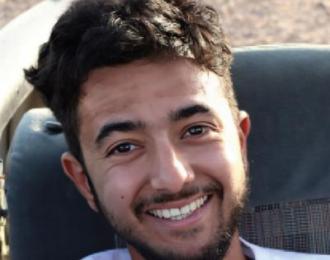Baltimore, MD - Jan. 21, 2019 - An impressive crowd of 400 adults packed the auditorium of the Weinberg Park Heights JCC on Wednesday evening, January 9. The evening’s conversation was sponsored by Chayeinu Baltimore, a new organization founded to increase education and awareness about the dangers of addictions. It was clear that most of those in attendance shared a common concern: the increasing prevalence of alcohol and drug addiction in the Baltimore Jewish community.
“We, in the Orthodox community, need to confront the dangers of addiction now, more than ever,” said Esti Ziffer, a founding board member of Chayeinu. “We are not immune to these dangers, and the most powerful asset we have is knowledge and information.” Ziffer said that Chayeinu was formed in order to help parents gain a better understanding of what their children are exposed to and how they should speak to them about addiction.
Chayeinu aims to educate families and work to prevent addiction by conducting a series of informative sessions for parents, teens and the community at large. It will also work closely with other organizations and agencies in Baltimore that are dealing with addictions and addictive behaviors.
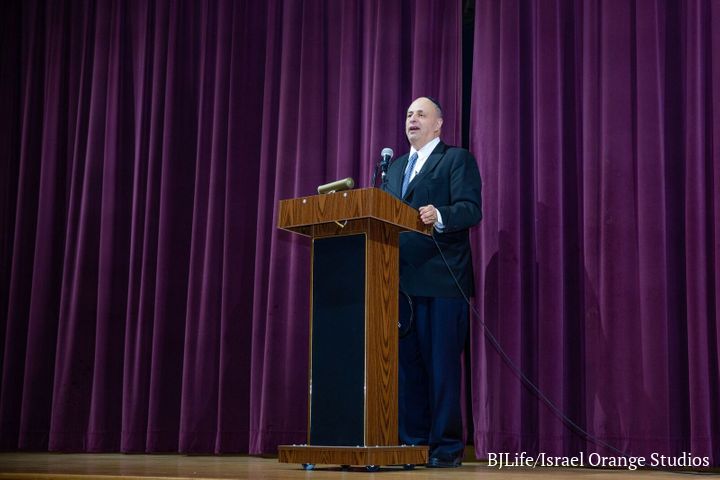
The guest presenter for the evening was Dr. David Pelcovitz, the Gwendolyn & Joseph Straus professor in Jewish education at Yeshiva University. Dr. Pelcovitz said that he’s frequently asked by parents if this is really a problem, or if there is a risk that parents may be putting ideas into their children’s heads by talking about it.
“Some of the people I’ve spoken to … are people who have lost children,” he said. “It’s all too heartbreaking. In recent months there have been several overdoses in this area. It’s real. There’s a tremendous amount of strength in the Baltimore community, but there’s risk too, like everywhere else.”
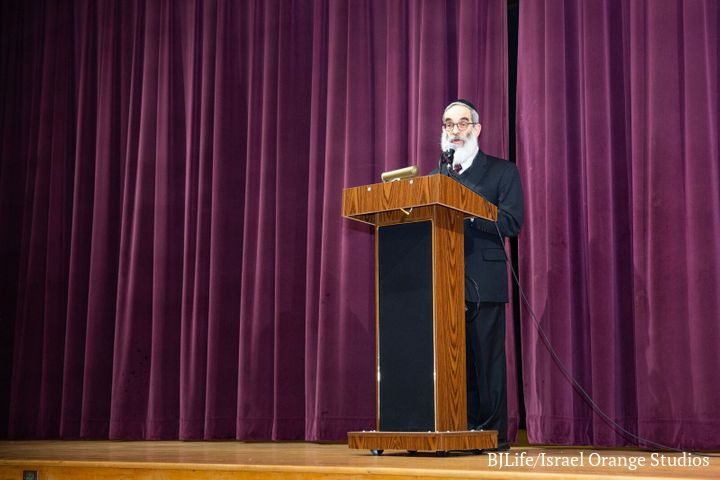
Larry Ziffer, who is also a founding board member of Chayeinu, introduced the speakers and told the story of an unsupervised pre-teen who drank a large quantity of alcohol at a community event while lots of adults just stood by.
“What if this young person had a genetic predisposition to addiction, and this had been the start of a lifetime of struggle?” Larry asked. “I have spoken with heartbroken parents, siblings and even recovering addicts, and they all tell stories that start like this one.”
In his talk, Dr. Pelcovitz touted the preventive powers of behavior modeling, clear and present communication and limit-setting. “More love. More limits,” he told the group. Addictive substances, he said, are not limited to drugs and alcohol, citing certain increasingly popular video games as potentially addictive. He warned parents that vaping — the smokeless, odorless technology of e-cigarettes — delivers more highly concentrated addictive nicotine than cigarettes in a way that’s easier to hide.
Pelcovitz advised parents to examine their own behaviors and relationships with both addictive substances and technology. He said a major complaint of youth is that their parents are on their phones too much and not really present with them. “They describe their parents as complaining to them that they’re always online,” he said. “But research shows that many parents, in fact, are just as likely as kids to be avoiding the important connections that forge meaningful communication.”
In approaching a discussion about addictions with children, Pelcovitz advised parents to communicate in a balanced and clear way. “Nagging and lecturing never works,” he said. “Strike while the iron is cold. Talk to them. Hear what they have to say. Help them develop ways of saying no. Give them active strategies. Ask what they’d say if they were dared or urged to try something dangerous.”
If a child is caught using alcohol or drugs, parents should not confront them angrily, Pelcovitz said, but tell the child this is serious and there will be consequences. Parents should preferably set up a time for discussion before there are specific concerns, and use that opportunity to see if the child is experimenting or if there is a bigger problem. Then, parents should enforce consequences that are “unemotional, logical and brief,” adding that “children need — and want — limits, despite their insistence to the contrary.”
Mordechai Gottlieb, Pelcovitz’s nephew who lives in Baltimore, came to see his uncle speak. Gottlieb has taken his uncle’s advice with his own children. “Kids are looking for limits and guidance,” he said. “They really are interested in what their parents have to say.”
Dr. Beth Loeb, a mother of three, including two teenagers, took notes throughout the talk. “It’s nice to have somebody give suggestions about how to approach a conversation with adolescents. I thought that was very valuable,” she said. “I thought at the Shabbos table we could go over this.”
Esti Ziffer said Chayeinu invited Pelcovitz to bring the issue to light from a professional perspective. “Experts are telling us that stigma is the greatest barrier to getting help and getting treatment,” she said. “That is a big part of what we’re trying to address. We’re hoping to bring this out into the open for productive discussions and to help remove stigma that assigns blame to victims.” She hopes this talk will challenge the assumption that a typical addict looks like “a homeless person or someone you can’t relate to.” It could really be anyone, she said. “Your doctor, your lawyer, your accountant, your neighbor, your close relative. No one wakes up one morning and decides to become an addict. It’s a disease and not a lifestyle that is rationally chosen. It’s a situation that requires help and support from an entire community.”
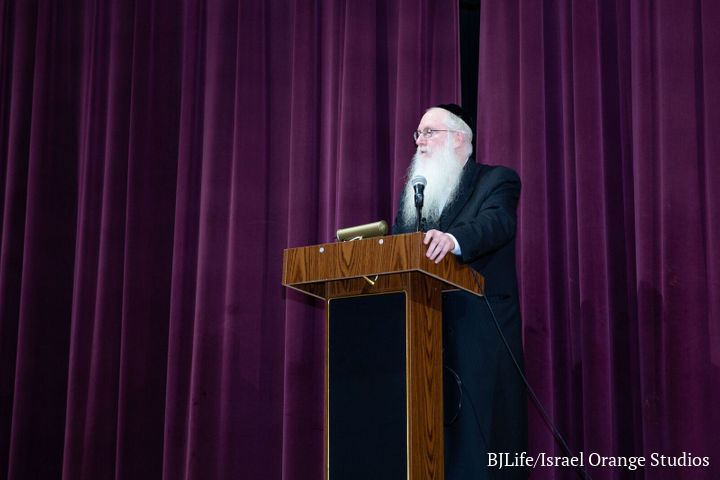
Rabbi Menachem Goldberger, who gave divrei bracha prior to Dr. Pelcovitz’s presentation, told attendees that the community can help by removing shame. “When people who have problems with addiction know they’re living in a community that wants them to get better and that offers them the services to do so,” he said, “we’re moving toward refuah. We’re moving toward a better place.”

Partial view of the crowd
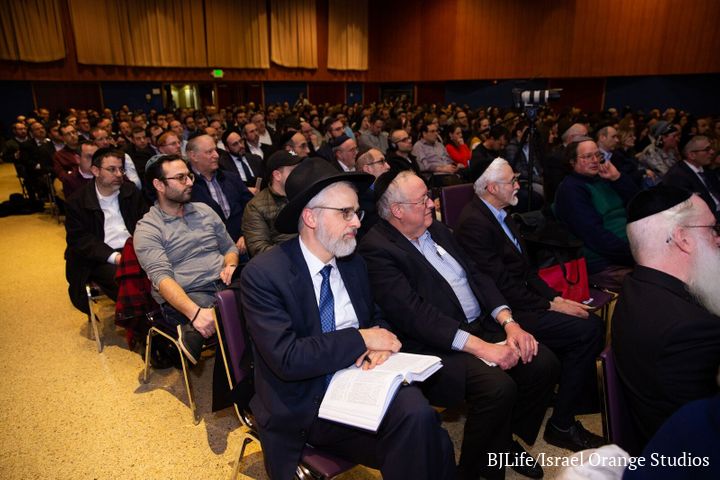
Partial view of the crowd
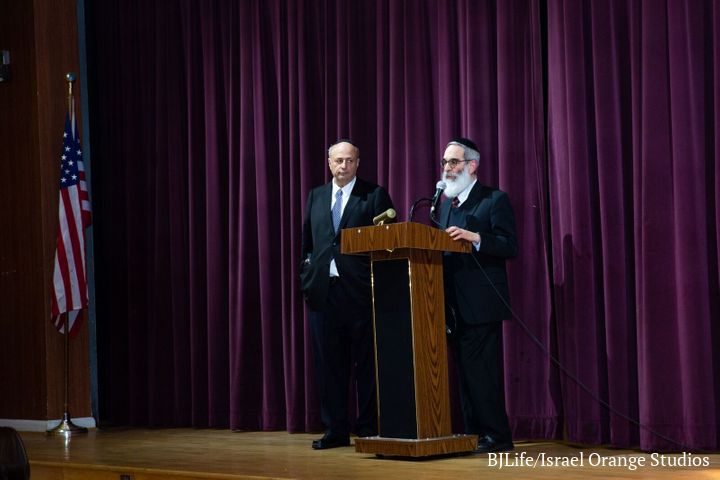
Q&A Session







